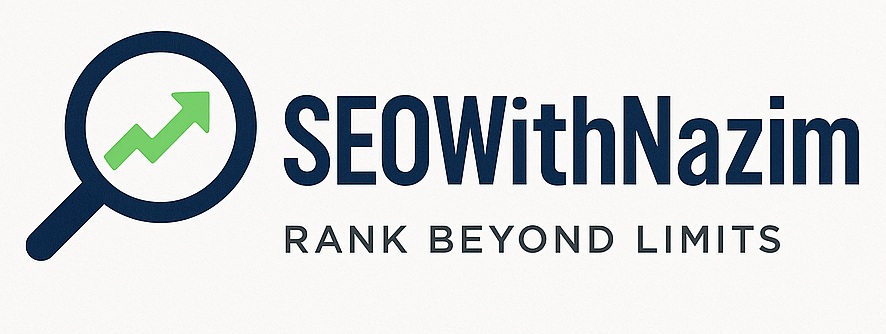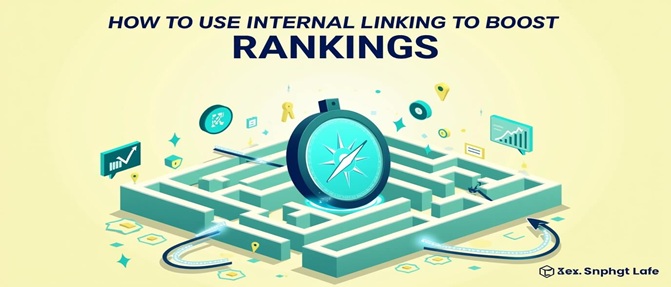To use internal linking to boost rankings, start by creating a clear site structure with topic clusters and pillar pages. Link related content using descriptive, keyword-rich anchor text to help search engines understand context. Prioritize deep linking to valuable pages, maintain a logical flow, and avoid over-optimization. Regularly audit for broken or outdated links, and track performance with SEO tools to refine your strategy.
Key Takeaways:
- Internal Linking is essential for both SEO and user experience—it improves site navigation, supports search engine crawling, and boosts content visibility.
- Common types include navigational links, contextual links, footer links, and breadcrumbs, each serving a unique purpose in structuring and guiding user flow.
- Internal links help Boost Rankings by distributing Link Equity, supporting Topic Clusters, and connecting content around Pillar Pages.
- Effective strategies involve using keyword-rich Anchor Text Optimization, linking to relevant content, avoiding excessive links, and prioritizing Deep Linking.
- Regularly updating old content to link to new pages helps keep the Site Structure dynamic and interconnected.
- Tools like Ahrefs, Yoast SEO, and Screaming Frog assist in managing internal link health and strategy.
- Avoid common mistakes like duplicate anchor text, broken links, or linking irrelevant pages.
- Tracking performance using Google Analytics and Search Console is key to refining your internal linking efforts for SEO success.
Importance of Internal Linking for SEO and User Experience
Internal Linking plays a vital role in shaping a website’s Site Structure and guiding both users and search engines through the content. For SEO, internal links distribute Link Equity across pages, helping search engines understand the importance and relevance of each URL. They also establish content relationships, enabling Google to index and rank content more effectively.
From a user perspective, effective Internal Linking improves navigation, reducing bounce rates and increasing time on site. Visitors can seamlessly explore related content, leading to better engagement and conversions. In essence, a well-planned linking strategy benefits both SEO performance and user satisfaction.
Common Types of Internal Linking
| Type of Internal Link | Description | SEO Benefit |
| Navigational Links (menus) | Found in site headers or sidebars; used to direct users to key pages like Home, Blog, Services, or Contact | Helps define Site Structure and ensures search engines can access essential pages |
| Contextual Links (in-text) | Embedded within body content, these links point to related posts, pages, or resources | Enhance topical relevance and improve Anchor Text Optimization |
| Footer Links | Placed at the bottom of each page, typically include legal, contact, or sitemap links | Ensure consistent access to foundational pages and distribute Link Equity |
| Breadcrumbs | Display the user’s current page location within a site hierarchy | Improve user experience and provide additional internal pathways for search crawlers |
How Internal Linking Boosts Rankings
How to Use Internal Linking effectively can lead to significant improvements in your search visibility. Internal links pass Link Equity to deeper pages, helping them gain authority and rank better. When done right, they create Topic Clusters that reinforce content relevance, making it easier for search engines to understand site themes. These connections support SEO Strategies like keyword targeting and content hierarchy. Plus, Google prioritizes pages that are well-integrated within a network of relevant links, especially those linked through Pillar Pages.
Best Practices for Internal Linking
1. Use descriptive, keyword-rich anchor text
Always choose Anchor Text Optimization that reflects the target page’s content. Avoid generic phrases like “click here.” Instead, use text like “SEO content writing tips” to add context for both users and search engines.
2. Link to relevant content that adds value
Each internal link should point to a page that enhances the reader’s understanding or helps them take the next step. Irrelevant links dilute authority and confuse users.
3. Don’t overdo it — maintain a natural flow
Too many links can overwhelm readers and make content look spammy. Maintain a logical structure and use links where they fit naturally within the sentence.
4. Use a reasonable number of internal links per page
There’s no hard limit, but SEO experts recommend 3–5 links per 1,000 words as a guideline. The key is quality over quantity.
5. Link deep into your site
Avoid linking only to high-level or popular pages. Use Deep Linking to support lower-tier content. This improves crawl depth and highlights underperforming pages that deserve attention.
6. Update older posts to link to new relevant content
Regularly revisit existing articles to insert links to newer pages. This refreshes old content and ensures Topic Clusters stay connected as your site grows.
Build a Smart Internal Linking Strategy
- Start with a clear Site Structure built around Pillar Pages and Topic Clusters.
- Identify top-performing content and link out to underperforming but relevant pages.
- Use a spreadsheet or CMS plugin to track where links are used.
- Group related content and interlink them to build strong topical signals.
- Prioritize Deep Linking and ensure every important page receives at least one internal link.
Ø
Tools to Help With Internal Linking
- Ahrefs Site Audit – Identifies orphan pages and provides internal link suggestions.
- Screaming Frog SEO Spider – Crawls websites to analyze link structure and find issues.
- Yoast SEO (for WordPress) – Offers internal linking suggestions directly within the post editor.
- Link Whisper – AI-based internal linking plugin for automating link insertion in WordPress.
- Google Search Console – Provides internal link reports under the “Links” tab.
Common Internal Linking Mistakes to Avoid
- Using the same anchor text for multiple pages – Creates confusion for search engines about which page should rank.
- Linking to irrelevant content – Misleads users and weakens your SEO Strategies.
- Neglecting orphan pages – Pages without internal links are less likely to be crawled or ranked.
- Over-optimizing anchor text – Can trigger spam filters or appear manipulative to search engines.
- Ignoring mobile navigation – Ensure links are accessible and user-friendly on all devices.
Tracking and Measuring Success
Use tools like Google Analytics and Google Search Console to monitor how internal links impact user behavior and rankings. Key metrics include average session duration, bounce rate, and pages per session. Evaluate whether target pages are receiving more impressions and clicks after implementing your strategy. If not, refine your Internal Linking structure or adjust Anchor Text Optimization for better relevance.
Optional Additions & Final Tips
- Perform periodic content audits to maintain link accuracy and update broken links.
- Avoid linking every keyword—select strategic phrases that support Topic Clusters.
- Use HTML sitemap for crawlers to understand the complete site hierarchy.
- Test links regularly to ensure they aren’t leading to redirects or 404s.
- Balance link distribution—don’t send all internal links to a single page.
- Combine with external linking for broader authority, but always give priority to internal relevance.
Conclusion
Effective internal linking goes beyond adding random links—it shapes site structure, distributes link equity, and enhances user navigation. Using topic clusters, pillar pages, and optimized anchor text boosts content relevance and search engine visibility. Key practices include deep linking, logical flow, and regular updates. Tools like Yoast SEO and Ahrefs aid implementation, while audits and analytics ensure performance. Avoid common pitfalls like broken links or over-optimization. Done right, internal linking improves SEO and creates a seamless user experience.
FAQs:
- What is internal linking in SEO?
Internal Linking refers to hyperlinks that connect one page of a website to another within the same domain. - How does internal linking boost rankings?
It passes Link Equity, improves Site Structure, and helps search engines crawl and index content effectively. - What are the common types of internal links?
They include navigational links, contextual links, footer links, and breadcrumbs. - What is anchor text optimization?
Using descriptive, keyword-rich phrases in links to improve context and relevance for search engines. - What tools help with internal linking?
Tools like Ahrefs, Screaming Frog, and Yoast SEO assist with internal link analysis and implementation.

Nazim is a Bangladesh-based SEO specialist with years of hands-on experience in organic search growth. He runs seowithnazim.com, a blog dedicated to simplifying SEO through tutorials, tools, and step-by-step guides. Nazim focuses on actionable, ethical strategies that deliver long-term results.


Leave a Reply